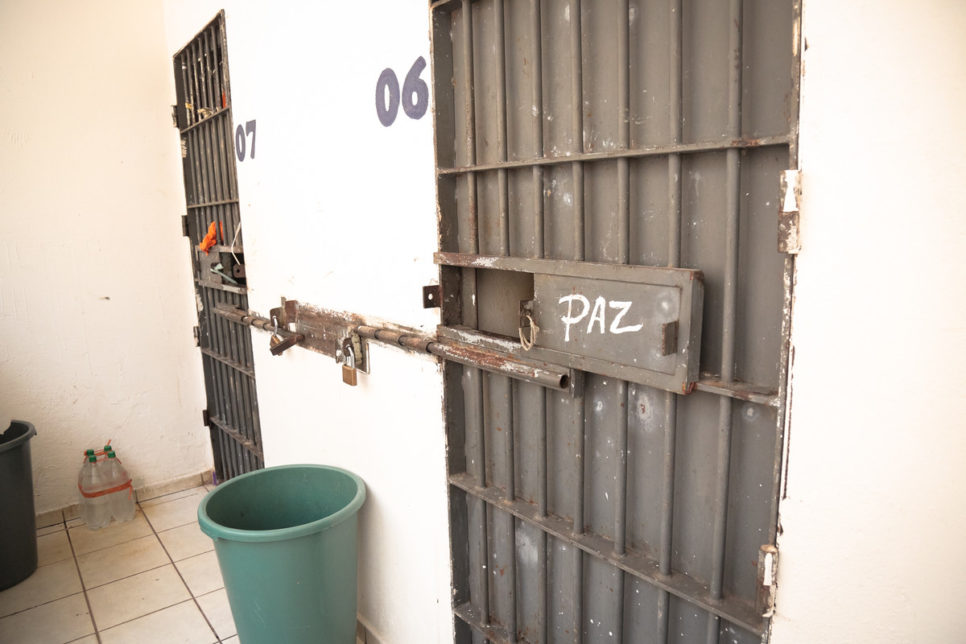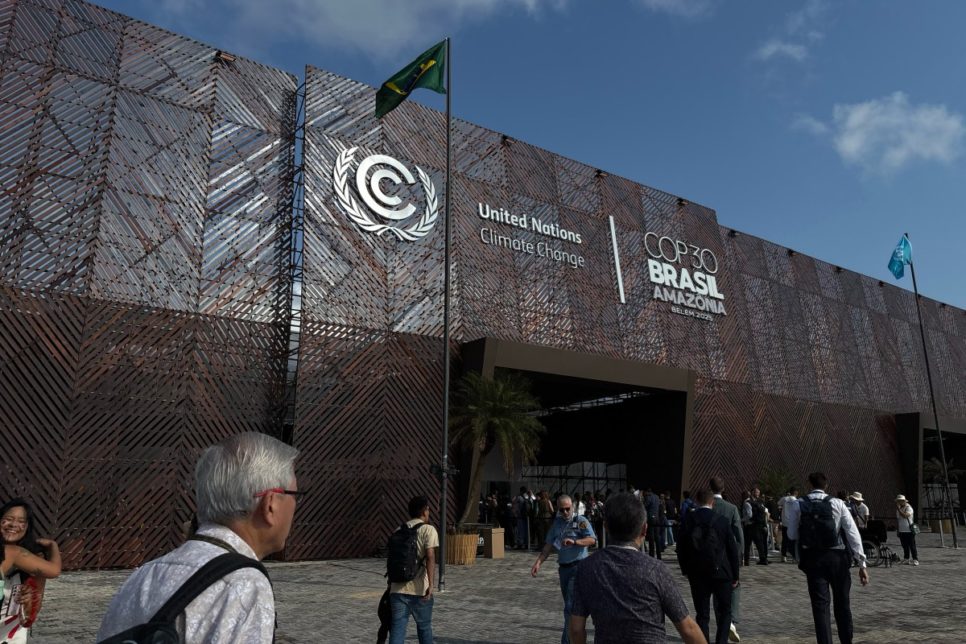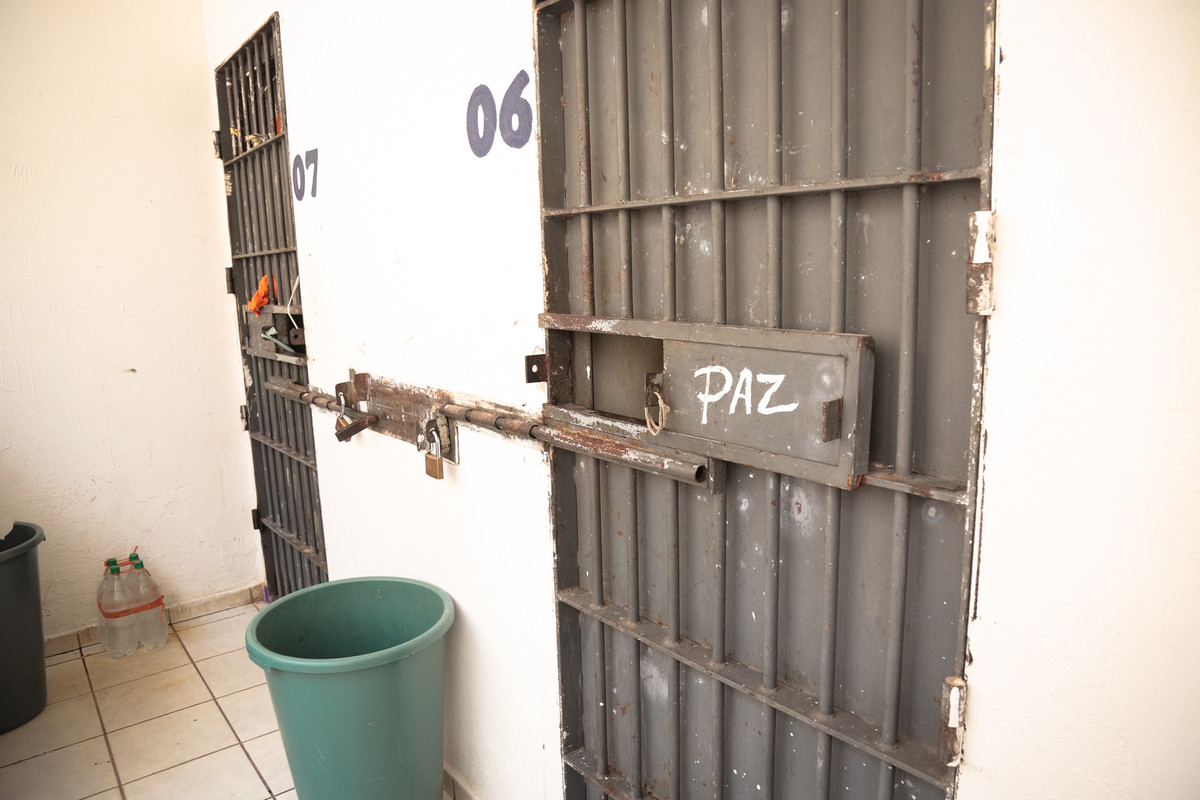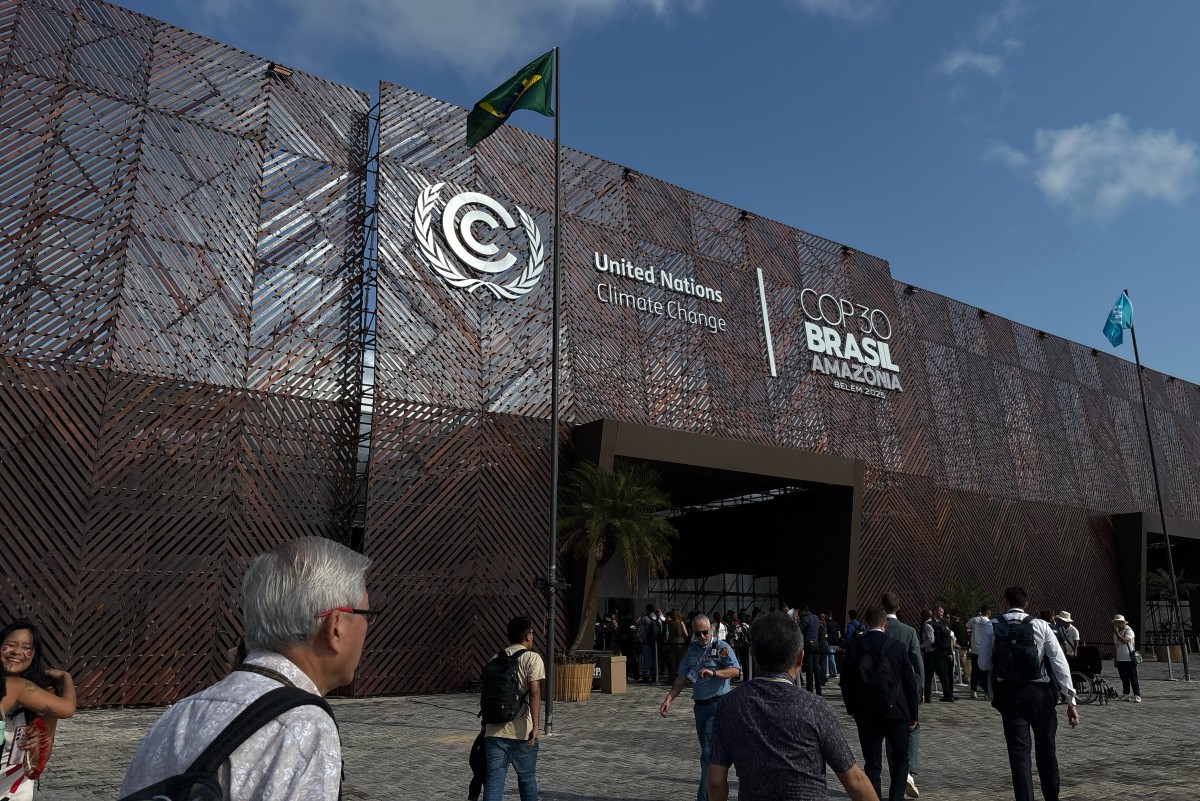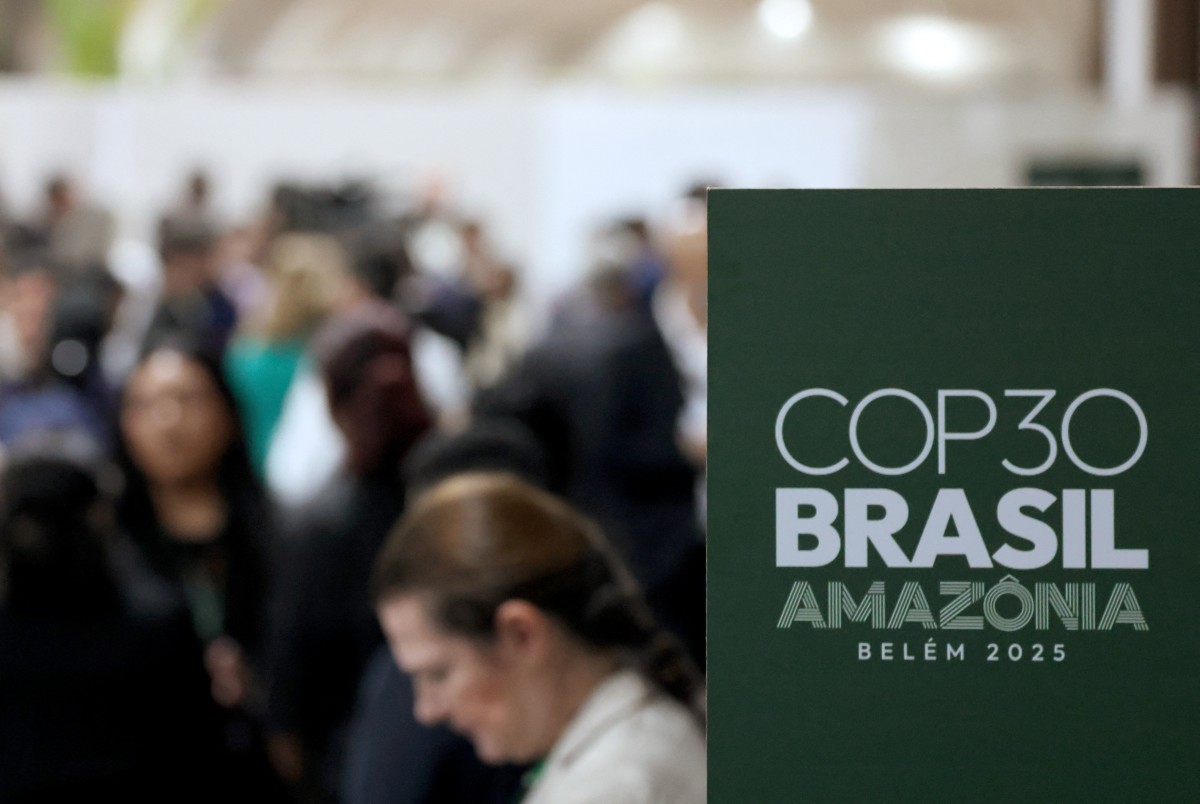What is the role of cameras on police uniforms? See what the experts say
Research shows fewer deaths during police interventions when cameras are used on officers’ uniforms. Important points are under discussion, such as how the recordings should be stored, the oversight of the officers and their conduct, and the rules for accessing the images
 Câmeras corporais no uniforme de PMs. Foto:
Câmeras corporais no uniforme de PMs. Foto:
The use of body cameras so police officers can capture images during stops has been defended by experts in public security and human rights. One of the main advantages of using this equipment is a reduction in police lethality during stops. Another important point is the greater security provided to the officers themselves.
One study, released in May 2023 by the Brazilian Public Security Forum, found a reduction of 62.7% in deaths during interventions by on-duty military police officers in São Paulo – the majority (76.2%) in brigades that were part of the body camera program.
Despite these positive statistics, the São Paulo state government cut at least R$37 million from the program over the course of last year. In 2023, Governor Tarcísio de Freitas issued four decrees that reduced investments in cameras and transferred the spending to other areas. The last one was in December. In January, a public statement signed by six organizations that work with public security, including Conectas, expressed concern over the cancellation of the investments.
Read more
In Rio de Janeiro, the use of cameras by police officers has been ordered by the Supreme Court. Since January 8, police officers from the elite military police unit BOPE must use body cameras when called into action. The measure is the result of a ruling by Justice Edson Fachin following an analysis of ADPF (Allegation of Violation of a Fundamental Precept) Case No. 635, known as the “ADPF Favelas Case”.
Read more:
- UOL series exposes manipulation of military police body cameras and how this technology is discouraged in São Paulo
- Law enforcement: the role of body cameras on uniforms
At the federal level, the government is trying to institutionalize the use of body cameras for police officers across the country. The Ministry of Justice opened a public consultation on the topic in December and has already announced that it intends to publish regulations to include them in personal protection equipment. The National Criminal and Prison Policy Council has already published a recommendation on their use.
While a law is not being passed, the consensus forming across the country is that simply installing cameras on police uniforms is not enough to prevent or guarantee accountability for police lethality and forms of other institutional violence. An efficient management of the images is necessary, as well as coordination with the Justice System. To talk about the topic, Conectas heard from three experts:
- Gabriel Sampaio, director of litigation and advocacy at Conectas
- Monique Cruz, coordinator of the Institutional Violence and Public Security program at Justiça Global
- Daniel Edler, postdoctoral researcher at NEV/USP (Center for the Study of Violence of the University of São Paulo)
See below:
What is the role of body cameras on police uniforms today?
Gabriel Sampaio: The use of body cameras is of fundamental importance for the qualification of criminal investigation, the external oversight of police activity and the protection of the life and physical integrity of officers and citizens directly or indirectly caught up in police actions or police stops. Their use offers the police and society an instrument of prevention and control against police abuse, as well as providing evidence of illegal activities, both when committed against or by the officers.
Monique Cruz: Body cameras have, among other things, played a role in helping Brazil create a democratic culture of control over police forces and, consequently, recognize that public security is not achieved through violence, torture and death. The use of body cameras, in addition to their effective function of providing evidence (for the protection of people in general, including police officers in their professional role), has the power to create the understanding that citizens should keep check on the actions of the police. Unfortunately, ideas are reproduced in Brazilian society that are extremely harmful to democracy: on the one hand, part of the population feels protected by a state policy that violates certain groups – particularly black and impoverished people – and, on the other hand, these groups cannot trust an institution that promotes violence and death every day using justifications that are not supported by lived reality.
Daniel Edler: Body cameras divide opinions. There are those who see them as a solution to the dual problem of violence and police legitimacy – from this perspective, all you need to do is attach cameras to uniforms to reduce the use of force and foster greater confidence among the population. On the other hand, there are those who see cameras as a type of “shackle” that discourages police action, increasing crime in large Brazilian cities. But research presents a more nuanced picture. Impact assessment studies indicate that, under certain conditions, cameras can indeed reduce the use of force, for two reasons: citizens stopped by the police tend to respect the officers more, avoiding an escalation of tensions; and the cameras encourage police officers to follow operational protocols, reducing cases of abuse.
There is no evidence in Brazil to suggest that cameras have made police officers less active against crime. What the research does show is that police officers start to make more records of incidents that were previously neglected, such as domestic violence.
However, cameras do not achieve these effects by their mere presence on the uniform. Most studies indicate that inadequate protocols for the use of cameras and problems with the chain of custody of the data can render cameras ineffective. This is why it’s important for the police forces to pay attention to these details, carry out operational tests and, primarily, listen to the legitimate concerns of officers (privacy in certain places, for example, is an issue that needs to be addressed). If we don’t convince the officers, we will continue to see the thousand and one ways the monitoring can be bypassed.
Finally, the equipment needs to be part of an institutional process to reform and professionalize the police, the key goal of which should be to make the police force more effective and less lethal. If the government does not even recognize the problem of police lethality, or even praises violence as a strategy for reducing crime, cameras will solve nothing.
What guidelines should governments adopt when implementing this technology for their police forces?
Gabriel Sampaio: There is an important debate on the guidelines to be adopted by governments. First of all, it is important for the use of cameras to be a priority for all governments, until their implementation becomes universal. The data show a high capacity to reduce lethality, provide evidence of illegal acts and offer greater protection for police officers against crimes committed against them when they are on duty. This is why, in general terms, their use needs to be universal, implemented together with oversight procedures, through access by correctional and external control bodies, such as the Public Prosecutor’s Office and the Public Defender’s Office. Other guarantees needed include: i) auditability of the system and the accountability of the officers for its use; ii) integrity of the images and streamlining of the protocols and technologies to prevent illegal activities; iii) development of tools that help identify and store images of illegal and violent acts; iv) respect for fundamental rights in the storage and use of personal images.
Monique Cruz: Some guidelines have been widely discussed and identified by civil society and sectors of government as essential to the successful implementation and use of body cameras. These include technical issues related to filming in particular, such as greater control and affective access by oversight bodies to the material produced by the cameras, as well as others such as automatic activation, access by victims, relatives, defendants, public defenders and also the length of time for storing and maintaining the material. Furthermore, it is essential that procedures are put in place to guarantee social participation and control over how the policy will be implemented and monitored and what kind of transparency, funding and accountability mechanisms there will be. But these issues, unfortunately, are not observed by the police forces or public security departments in any Brazilian state, even for more everyday matters.
Daniel Edler: The Ministry of Justice and Public Security has created a working group to listen to the concerns of police officers and civil society, and to gather evidence about the effects of cameras in other countries. This should result in national regulations for body cameras, in a transparent and pluralistic process. Furthermore, the National Criminal and Prison Policy Council has issued a recommendation on the use of the equipment by both public and private security agents. It is a very comprehensive document that should serve as a guide for anyone wanting to implement a body camera system.
Government officials who want to implement cameras for police officers should observe three points: the method of recording, the internal and external oversight of police officers and the policy for accessing the images.
- Research indicates that when the systems do not automatically record the entire work shift, the effects on reducing the use of force are much less evident. This does not mean that exceptions cannot be made to cater to the demands of police officers to privacy. The protocol in São Paulo, in which the camera continually records images and the officer presses a button when they stop someone to improve the quality of the video and capture the audio, has proven to be the most appropriate.
- It is essential for police chiefs to use the captured images to supervise their subordinate officers. Research indicates that this serves to deter police from acting illegally, and also to improve training and operational protocols. But this supervision also causes some problems, such as a greater workload and concerns about abusive practices. As such, it is important to establish external assessment mechanisms, which can be done by strengthening institutions such as the Ombudsman’s Office or the Internal Affairs Office.
- Access to the images is also a delicate matter. Research indicates that police institutions in Brazil and around the world tend to make it difficult to access videos that jeopardize their officers. And, when the databases are managed by the police themselves, it is common for certain images to be selected that reinforce narratives that favor the police. This is why it is important for internal affairs officers, public defenders, prosecutors and judges to have access to the database, which must not be unrestricted, as the cameras capture some very sensitive images, such as victims in extremely vulnerable situations, injured people and even domestic spaces. The image management policy must balance these different demands and also ensure the security of the database.
- In short, body cameras are only as good as their operating protocols. If implemented well, they can help shape less violent and more professional police forces. But without any external control or barriers to prevent abusive use (such as image processing for facial recognition), they can become just another punitive or institutional propaganda tool.
Jurists defend use of cameras
A legal opinion from the Fundamental Rights Clinic of UERJ (Rio de Janeiro State University), which analyzed the legal cases to curb rights violations within the scope of Operation Shield, launched in August 2023 on the coast of São Paulo, noted that “body cameras promote public security, in the constitutional sense of public services provided in an egalitarian and efficient manner, based on the defense of fundamental rights”. Read the full legal opinion at this link.
